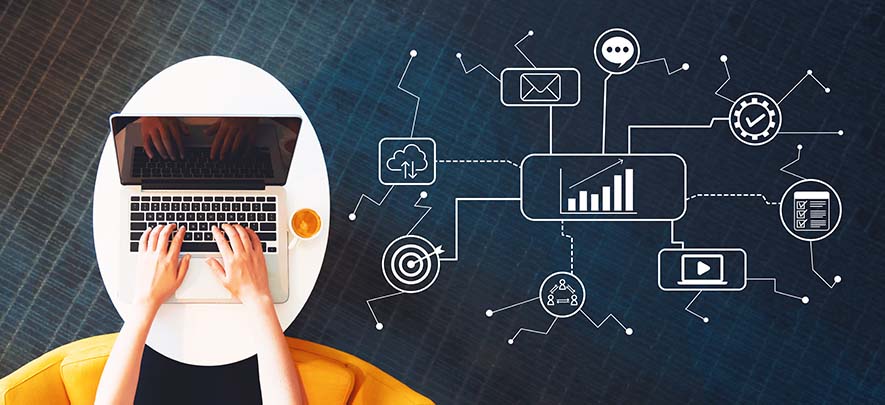Here's the digital Covid-19 recovery plan and 3 ways to do it

Digital & Technology
272 week ago — 9 min read
Every day brings more worrying news about the effects of the Coronavirus on our communities and, with that, to businesses big and small.
While some are fortunate to pivot their businesses to delivery, call-in or virtual service models, most are less so. Still, as much as it is tempting to board up a storefront until better times, that need not be the case with your digital strategy.
If your financial position allows, use this time as an opportunity to stay engaged with your customers and prospects. Start conceiving recovery plans and strategise on what proxies can guide the best time to relaunch.
The time to plan for recovery is before the recovery.
When digital activity rebounds and your competitors get back into the game, it will be too late to develop your strategy and more expensive to implement it.
Pave your path to a more successful comeback with three steps.
- Review your site and ensure it is the best it can be.
- Nurture customer and prospect relationships with useful content. This is also an opportunity to gather insights on shifting user behaviour.
- Develop now a prioritised plan for how to relaunch so it is ready to execute when the landscape improves.
1. Improve your site
From mobile load time to navigation, from shopping cart functionality to email capture, nearly any site can use an upgrade.
Mobile
If your site is not AMP (accelerated mobile pages) optimised or offers limited mobile features, mobile should have been a 2020 priority even before the Coronavirus hit. In many industries, more than 50% of traffic now comes from non-desktop devices.
A mobile-first user experience is an absolute must these days, and an AMP-optimized site that loads fast will benefit users no matter what channel they come from. From an SEO perspective, there is consensus that search engines prefer fast loading sites. For all channels, and especially for paid media where each click incurs incremental costs, fast-loading sites matter to reduce bounce rate. With each second in load time, bounce rates grow exponentially.
Together with speed, explore how to elevate your:
- Key value proposition.
- Service offering summary.
- Transaction path.
- With the rise of mobile, users have become more and more sensitive to having what they need just a click away.
Experiment with scrolling menus, drop-downs and other ways to package as much as possible into the mobile screen which thankfully has grown over the years making it less daunting as it once was.
Shopping cart functionality
When was the last time you bought something on a non-third-party site and had a truly delightful experience? While Amazon, Online Travel Agencies and other aggregators set a high bar, even simple changes can lead to better conversion rates and return on investment (ROI).
Highlight benefits of buying direct, such as best price guarantees, customer service support and perks not available if buying from third parties. Allow users to leave from and return to the shopping cart without losing its contents. Support guest check-out but follow up with emails to encourage setting up the customer profile for post-sales follow-ups. Provide ways to see images or descriptions of purchases items, as users often need a final time to review details.
Email capture
In the time of crisis, email is key for proactively nurturing existing customer relationships. However, don’t overlook also having an email capture effort. Even in times of slower activity, it is important to keep replenishing your email database. Make sure that your site makes it as easy as possible for anyone to join your email list, regardless of what page they are on.
First, many users may want to give you a better email to keep them updated (not the one where they send all their email subscriptions, but the one they actually check).
Secondly, there are likely new users you have not captured previously. People are working remotely more, many under reduced time arrangements and have more time to engage online.
And lastly, incentivise them with an offer or a sample to sign up. Even a small 10% or 15% offer or a short free trial, will be motivating.
And after they sign up, follow up with a compelling email thanking them with a custom offer not found on the public site. That will be sure to engage them and transact.
Also read: Accepting ‘New Normal’ best practices for SMEs
2. Maintain active audience dialogue
The first priority is to address current customer concerns. With that accomplished, begins the need for careful and persistent audience nurturing.
When the COVID-19 crisis ends, you don’t want to start from scratch rebuilding your digital footprint and your brand’s online strength. To do so, to the extent resources allow, maintain presence dialogue through social, organic and paid channels.
Social is a great way to engage your audience beyond one-way sympathy updates. While nice, they are every present and increasingly will not set you apart. Instead, surveys, contests, raffles and practical tips will keep you top of mind.
Aside from providing an outlet to upset travelers, Expedia’s can use the survey data to conceive potential staycation packages that would be attractive when travel starts resuming on a limited, local basis. Organic search steps and site content optimization are worth considering as well.
With the SERP increasingly acting as a brand’s homepage, there is tremendous opportunity to capitalise on content that is becoming more relevant in today’s new normal.
Those companies that seize this chance to educate and empower users with helpful advice – how to exercise smarter, cook healthier, better manage personal finance – will keep their digital following through the hard times and beyond.
Also read: 4 fool-proof ways to build strong customer relationships in the time of coronavirus
3. Develop your comeback plan for paid media
It seems counter-intuitive to develop an offensive strategy in the midst of a downturn. Especially, for channels needing direct investment typically used to drive pay for performance activity. However, delaying that until one is out of the woods provides no competitive advantage and risks the issue of scrambling to relaunch at the last minute.
While many advertisers across paid search, display, and other paid channels have paused campaigns, the strategic players are exploring how to bank any remaining budgets and devise targeted relaunch plans.
These days, any paid media channel comes with extensive control levers. From geo-targeting to device preferences, as well as first to third-party audience data integrations, it is possible to create efficient and curated full-funnel experiences across programmatic display, paid search, and paid social.
Develop marketing plans to have on standby to target most reliable user groups, leveraging unique value propositions. Discounts and free trials are one way to go, but many will jump to that.
With more time on your hands, be creative for how you can:
- Pique interest in your brand.
- Get users to think of your products in new ways and try services they may have not considered before.
This will create an arsenal of marketing strategies to jumpstart your recovery when things start improving.
To guide timing decisions, monitor trends and non-paid channels for evidence of stabilizing levels and where most promising digital activity occurs.
As the saying goes, ‘this too shall pass’. This will be true of the COVID-19 pandemic, but also of the time to plan your digital media recovery strategy.
Also read: SME sector – Bouncing back after Covid-19
Image source: shutterstock.com
To explore business opportunities, link with me by clicking on the 'Connect' button on my eBiz Card.
Disclaimer: The views and opinions expressed in this article are those of the author and do not necessarily reflect the views, official policy or position of GlobalLinker.
Posted by
HARSHAD PATELI'm Harshad Patel a CEO & Digital Marketing Consultants of Link Experts. I have started the digital marketing & advertising agency in Ahmedabad since 2015 to help...
View HARSHAD 's profile
Most read this week
Trending
What is BRC in Export Business?
Export Sector 2 week ago










Comments
Share this content
Please login or Register to join the discussion